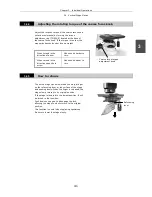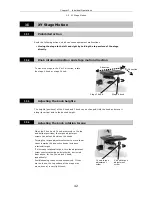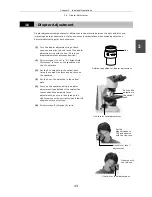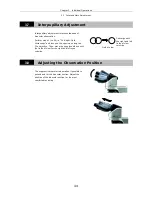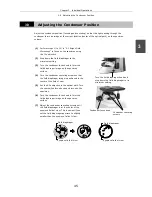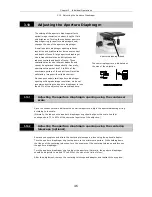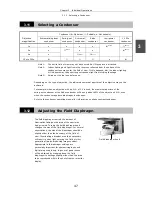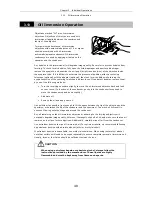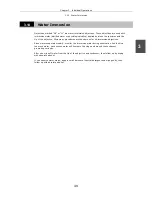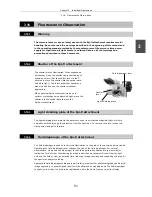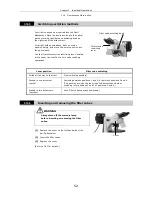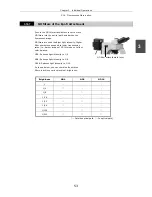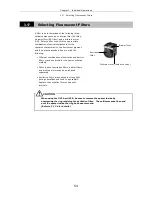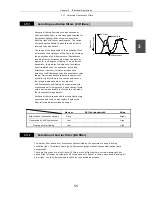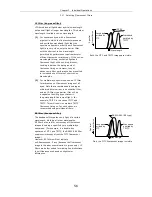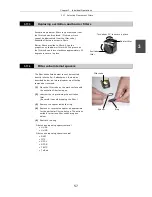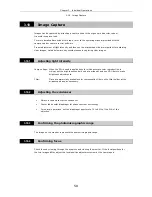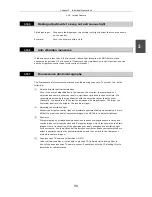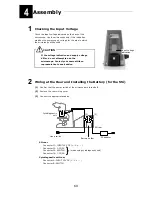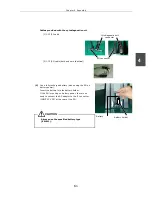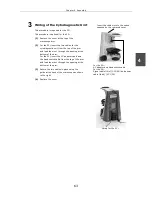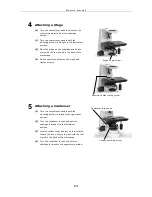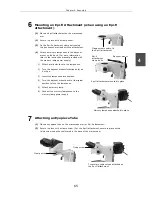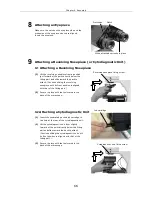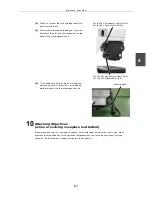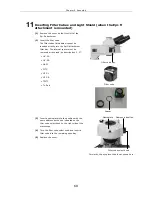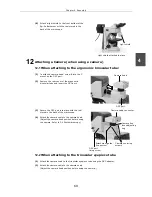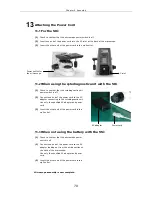
Chapter 3 Individual Operations
3.17 Selecting Fluorescent Filters
55
3
3.17.1
Selecting excitation filters (EX filters)
Excitation filters allow selective transmission of
light (excitation light) in the waveband required for
fluorescent light emissions from the specimen,
blocking light of all other wavelengths. The range
of wavelengths allowed to pass through a filter is
referred to as bandwidth.
The range of the bandwidth of the excitation filter
determines the brightness of the fluorescent image,
the generation of self-fluorescence (fluorescence
resulting from substances other than fluorescent
pigments), and degree of fading. The broader the
bandwidth, the greater the amount of excitation
light irradiated onto the specimen, increasing
brightness. However, this also increases the
amount of self-fluorescence and causes faster color
fading. Narrow bandwidth reduces the amount of
excitation light striking the specimen and causes
the image to appear darker, but reduces
self-fluorescence and fading. For specimens with
pronounced self-fluorescence, use excitation filters
with a narrow bandwidth (note that this will make
the fluorescent image darker).
Excitation filters are exposed to strong light during
operations and tend to age rapidly. Replace the
filter at intervals determined by usage.
Narrow
EX filter bandwidth
Wide
Brightness of fluorescent image
Dark
Bright
Generation of self-fluorescence
Low
High
Degree of color fading
Low
High
3.17.2
Selection of barrier filter (BA filter)
The barrier filter allows only fluorescent light emitted by the specimen to pass, blocking
excitation light. This allows viewing of a fluorescent image without excess illumination (dark
background).
There are two types of barrier filters: LP filters block all light below a certain wavelength but
pass all light of longer wavelengths. BP filters pass only light of a certain waveband, blocking all
other light. Use the filter type appropriate for your intended purpose.
EX filter
Bandwidth
Wavelength
0
Spect
ra
l
tr
an
smi
ssi
on

